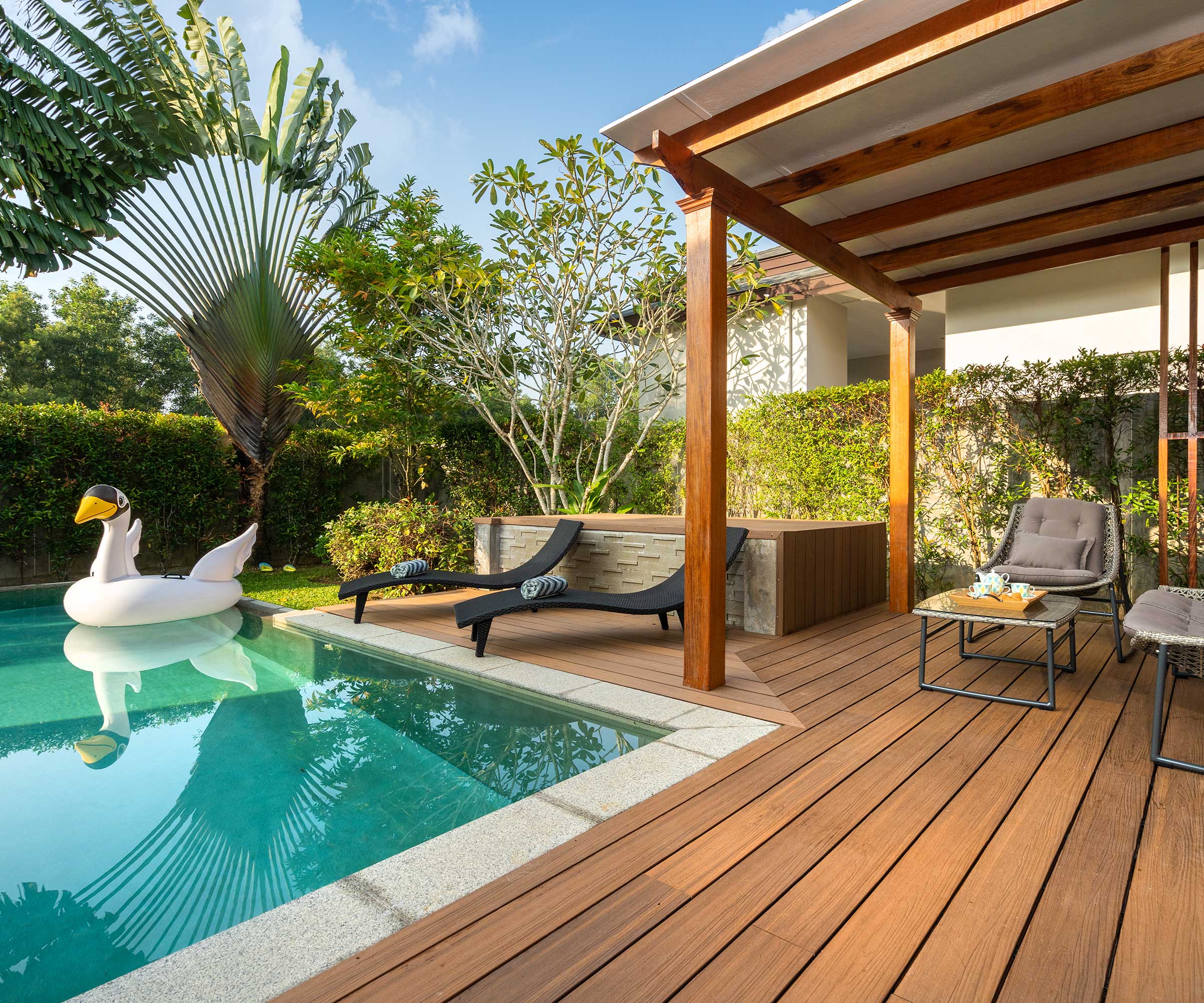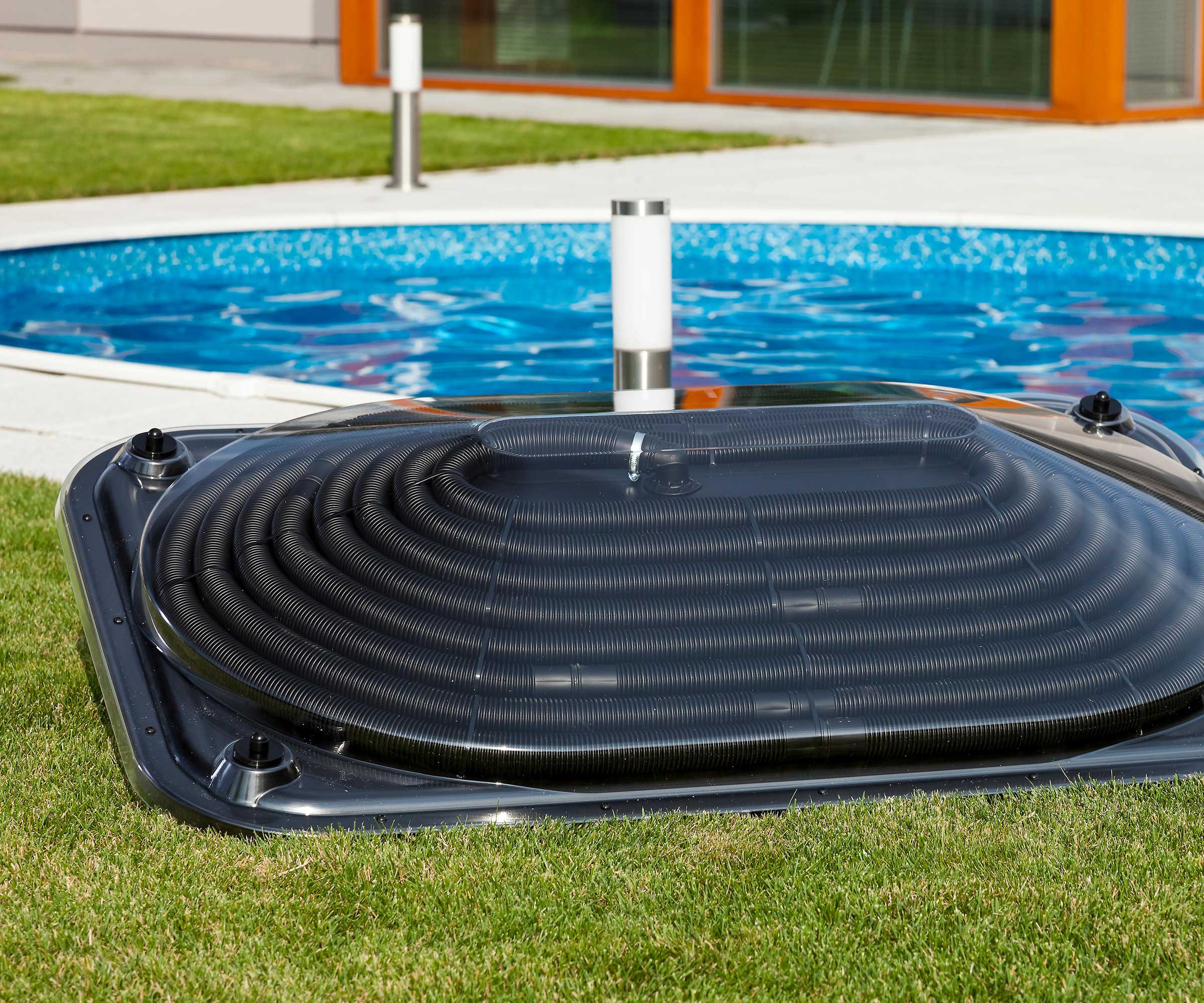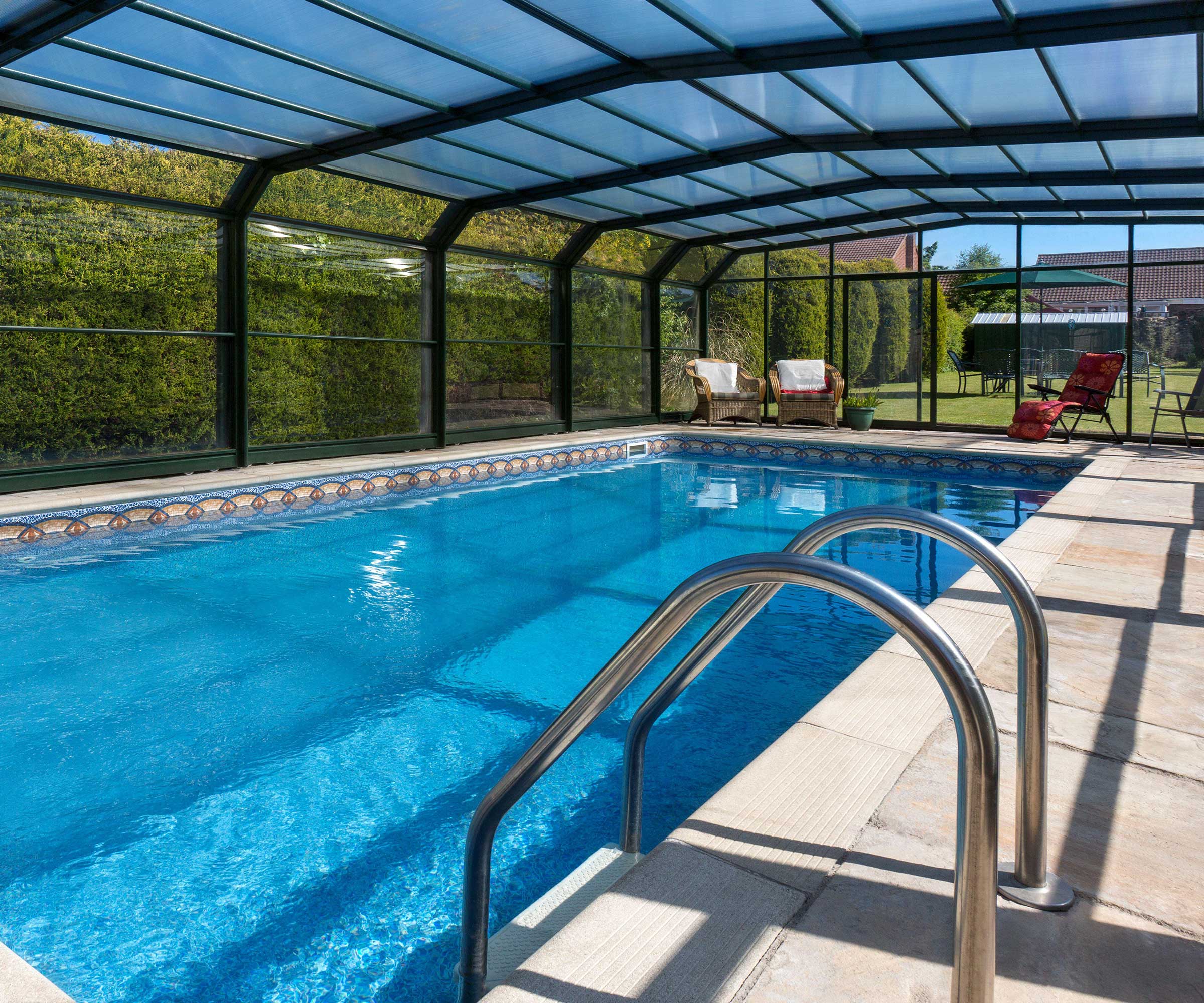How to heat a pool without a heater – 5 clever ways to keep the water warm
Swim in comfort while keeping costs down with this insider advice


Heating a pool without a heater may seem like an impossible task, but it can be done. It's all about harnessing the warmth of the sun, and there are some creative ways to do so that might just surprise you.
These solar-powered methods are much cheaper than traditional gas boilers and the like, which is a win for thriftier homeowners. As there's no plant room to build, most are easier to install, too.
That said, you will need adequate sunlight in your outdoor space to reap the benefits of these budget-friendly methods. This means that other, more-classic approaches are often more reliable for backyard pools in cooler climes. However, the likes of solar rings and more can still be a good summertime addition for keeping running costs down, wherever you are in the world. Without further ado, the experts explain the options.

Extend your swimming season by keeping your pool warmer for longer
5 alternative ways to warm up your pool
Whether you're planning a pool party or love a serene solo swim, enjoy warmer water and affordable costs with these methods.
1. Install a solar pool cover
The most popular method for warming up a pool without a heater is to use a solar pool cover, says Alicia Toedter of pool-care brand Leslie’s.
Also known as 'solar blankets', they are made of UV-stabilized polyethylene, and resemble an oversized sheet of heavy-duty bubble wrap, she explains. 'Not only do they prevent evaporation to reduce water loss by as much as 95%, but they also trap the sun’s warmth and transfer it to the pool water. Depending on the thickness and color of the solar pool cover, most pool owners can expect a 10-15˚F increase in water temperature, if not more.
'A physical solar cover is very large, and covers the entire surface of the pool,' she continues. 'Many pool owners use a solar cover reel to make it easier to take the cover off the pool and place it back on after swimming. Alternatively, some pool owners opt for solar sun rings, which are basically mini solar covers that are easier to handle.' These solar sun rings from Amazon are a popular example and are easy to clean.
Design expertise in your inbox – from inspiring decorating ideas and beautiful celebrity homes to practical gardening advice and shopping round-ups.
Alicia also highlights their affordability. 'Solar pool covers are one of very few swimming pool accessories that will pay for themselves in water, chemical, and energy savings over the course of one or two swimming seasons,' she says.

Alicia is the Education and Content Leader at Leslie’s, the leading pool and spa care brand in the U.S. Over the past five years, Alicia has dedicated herself to pool-care education, and she has a passion for creating engaging written and video content to help homeowners learn more about safely enjoying their pools.

A solar cover can help your pool retain heat when it's not in use
2. Add a liquid solar cover to your maintenance routine
The main downside of using a physical solar cover is that it won’t prevent evaporation or heat the pool while it's in use, says Alicia. 'This is where liquid solar covers come in handy.'
These are a special type of pool chemical that create a single-molecule layer at the surface of the water to prevent evaporation and trap heat. While they are somewhat less effective at reducing evaporation and retaining solar heat than the other type of solar covers, the liquid version keeps working even when swimmers are in the pool, she says.
Another plus point, as Alicia highlights, is that they are very easy to apply. 'Simply add a maintenance dose of the chemical once a week through the pool skimmer to enjoy the benefits.'
This non-toxic and odor-free SunHeater liquid solar blanket from Amazon is well-rated.

Solar liquids are simple to use
3. Try a solar pool heater
If a bit of plumbing doesn't put you off, another option is a solar pool heater.
'Solar heaters work by moving water through a series of tubes within a dark black solar panel, using the sun’s warming power to heat the water as it slowly passes through before returning to the pool,' Alicia explains. They rely on the pool pump to push the cool water through the panel and distribute the warmed water into the pool.
'It produces a similar effect as what you’ve probably noticed with a coiled garden hose left out in the sun – when you first turn the water on, it’s very hot,' she says.
As well as flat solar mats, you can also buy dome-shaped designs. This GoPlus solar dome heater from Amazon includes foldable legs and a leakproof hose. More than one can be connected to heat larger pools.

Dome-shaped solar heaters are a natural way to heat a pool
4. Factor in the sun when planning your pool
If you're still in the planning stages of a backyard pool, there are also ways to utilize 'passive solar heating', as notes Rick Sun, a plumber and handyman from Dallas.
'Design your pool area to maximize exposure to sunlight,' he explains. 'Consider factors such as the position of the pool in relation to the sun, the use of reflective surfaces near the pool to redirect sunlight, and the use of heat-absorbing materials such as stone or concrete around the pool.'
Rick also suggests using a black or dark-colored pool liner to help heat the water. Darker colors have a higher tendency to absorb heat when compared to lighter colors, he says.

Design your pool with sun exposure in mind
5. Opt for an enclosure
On the pricier side, but worth mentioning for its effectiveness, is a pool enclosure. As they'll block out the wind, they will help keep your pool warm. Plus, full enclosures are useful for keeping debris, such as pollen, out of your pool. Bugs, too.
If an overhead construction isn't practical for your outdoor space, a sturdy, windproof pool fence around the more exposed sides of your pool can be a helpful alternative.

An enclosure may be expensive, but there are multiple benefits
FAQs
How can you heat a pool for free?
Strictly speaking, even the cheapest pool-heating methods (usually solar covers) aren't free. However, once you've bought them, there are often no running costs, as they rely on the power of the sun. This also makes them much more eco-friendly than traditional options – a plus point if you're looking to create a more sustainable garden.
These methods can be effective for both in-ground and above-ground pools – just ensure you take the size of your pool into account. For instance, you'll need more solar rings or multiple solar heaters for larger pools to notice a difference in temperature.
And, for the very best results in keeping your pool warm without a heater, don't just stick to one approach – consider combining methods, instead.

Holly started writing about gardening five years ago, and she is a regular contributor to Homes & Gardens. She has also written many gardening features for Woman & Home and Real Homes, too. She has previous experience as a professional gardener, where she helped to plant and maintain private gardens. Holly has also looked after allotment plots over the years and loves to grow her own flowers and veggies from seed. In her spare time, she enjoys visiting local gardens, botanical drawing, and tending to her ever-growing collection of houseplants.